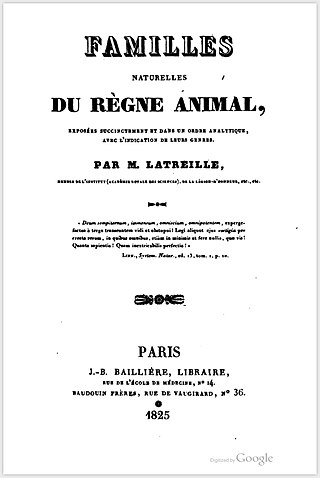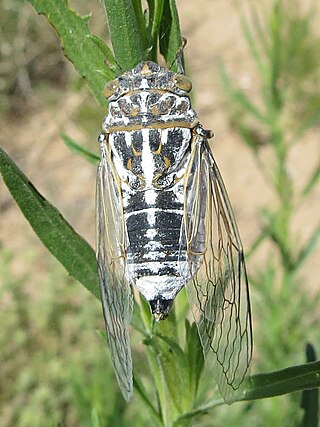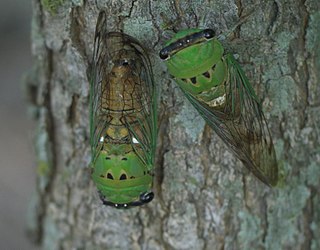
Cicadas of the genus Neotibicen are large-bodied insects of the family Cicadidae that appear in summer or early fall in eastern North America and formerly Bermuda. Common names include cicada, harvestfly, jar fly, and the misnomer locust.

Tibicen is a historical genus name in the insect family Cicadidae that was originally published by P. A. Latreille in 1825 and formally made available in a translation by A. A. Berthold in 1827. The name was placed on the Official Index of Rejected and Invalid Generic Names in Zoology by the International Commission on Zoological Nomenclature in 2021. Certain European cicada species that were included by some authors in this genus at the time of its suppression are now listed under genus Lyristes Horváth, 1926. Other formerly-Tibicen species are placed in the tribe Cryptotympanini and include the genera Auritibicen Lee, 2015, Hadoa Moulds, 2015 Megatibicen Sanborn and Heath, 2016, and Neotibicen Hill and Moulds, 2015.

The genus Hadoa comprises large-bodied Cicadidae occurring in Western North America. Until recently, these species were in the genus Tibicen, which has now been redefined so as to include only a few European species, while most species from the Eastern and Central US are now placed in Neotibicen and Megatibicen.

Megatibicen is a genus of cicadas in the family Cicadidae, with about 10 described species. Until 2016, these species were included in the genus Tibicen and then briefly in Neotibicen. The species formerly of genera Ameritibicen Lee, 2016 and Gigatibicen Lee, 2016 are now considered species of Megatibicen Sanborn & Heath, 2016.

Neotibicen lyricen, the lyric cicada, is a species of cicada in the family Cicadidae.

Neotibicen pruinosus, commonly known as the scissor grinder, is a species of cicada in the family Cicadidae.

Neotibicen superbus, the superb dog-day cicada, is a species of cicada in the family Cicadidae. It is the greenest cicada in the neotibicen genus. It has reduced black patterning and looks different than most other cicadas in its genus. Its song is a soft buzz that reaches a crescendo.
Diceroprocta swalei is a species of cicada in the family Cicadidae. It is found in Central America and North America.
Diceroprocta knighti is a species of cicada in the family Cicadidae. It is found in Central America and North America.
Diceroprocta biconica, or the Key's cicada, is a species of cicada in the family Cicadidae. It is found in the Caribbean Sea and North America.
Diceroprocta azteca is a species of cicada in the family Cicadidae. It is found in Central America, North America, and South America.

Diceroprocta cinctifera is a species of cicada in the family Cicadidae. It is found in North America.
Diceroprocta aurantiaca is a species of cicada in the family Cicadidae. It is found in North America.

Diceroprocta semicincta is a species of cicada in the family Cicadidae. It is found in Central America and North America.

Diceroprocta eugraphica is a species of cicada in the family Cicadidae. It is found in Central America and North America.
Cornuplura is a genus of cicadas in the family Cicadidae. There are at least three described species in Cornuplura.
Cacama moorei, or Moore's cactus dodger, is a species of cicada in the family Cicadidae. It is found in Central America and North America.
Cacama collinaplaga is a species of cicada in the family Cicadidae. It is found in North America.

Megatibicen resh, the resh cicada or western dusk singing cicada, is a species of cicada in the family Cicadidae, found in North America.

Lyristes is a genus of cicadas from Europe and the Middle East. It was described by G. Horvath in 1926.














